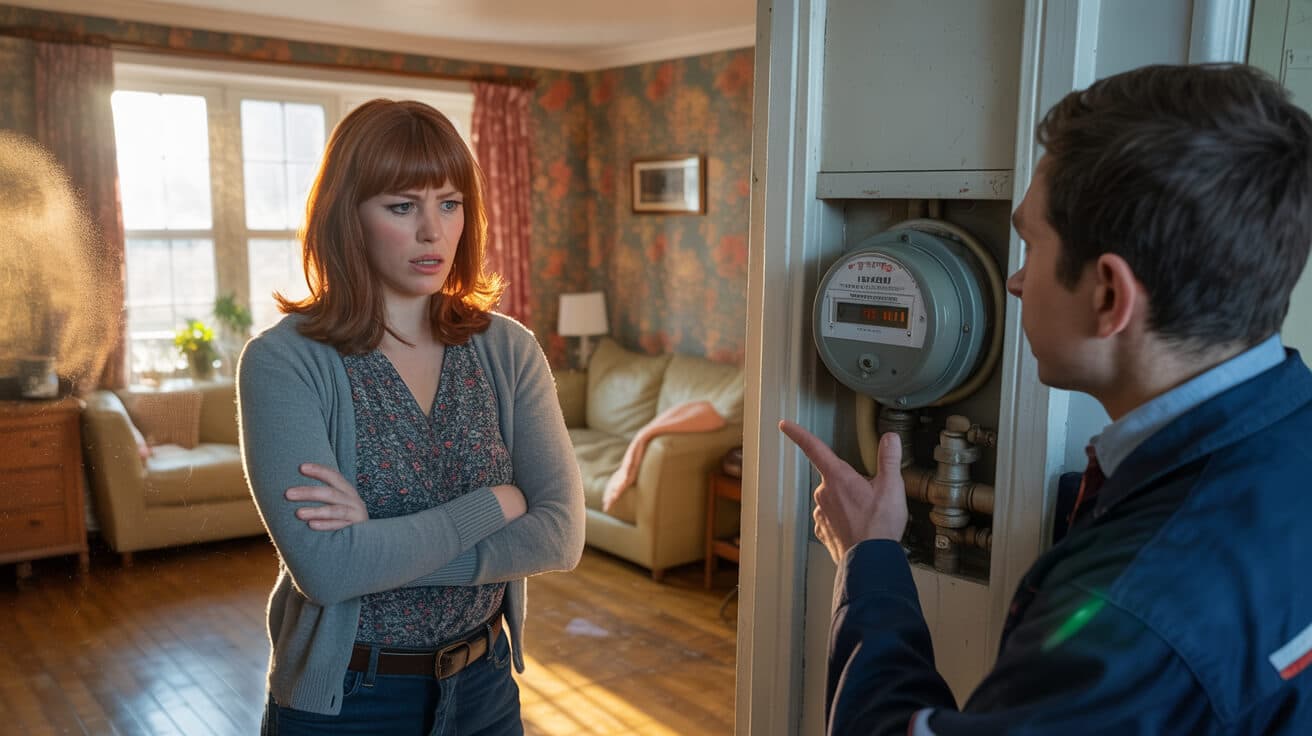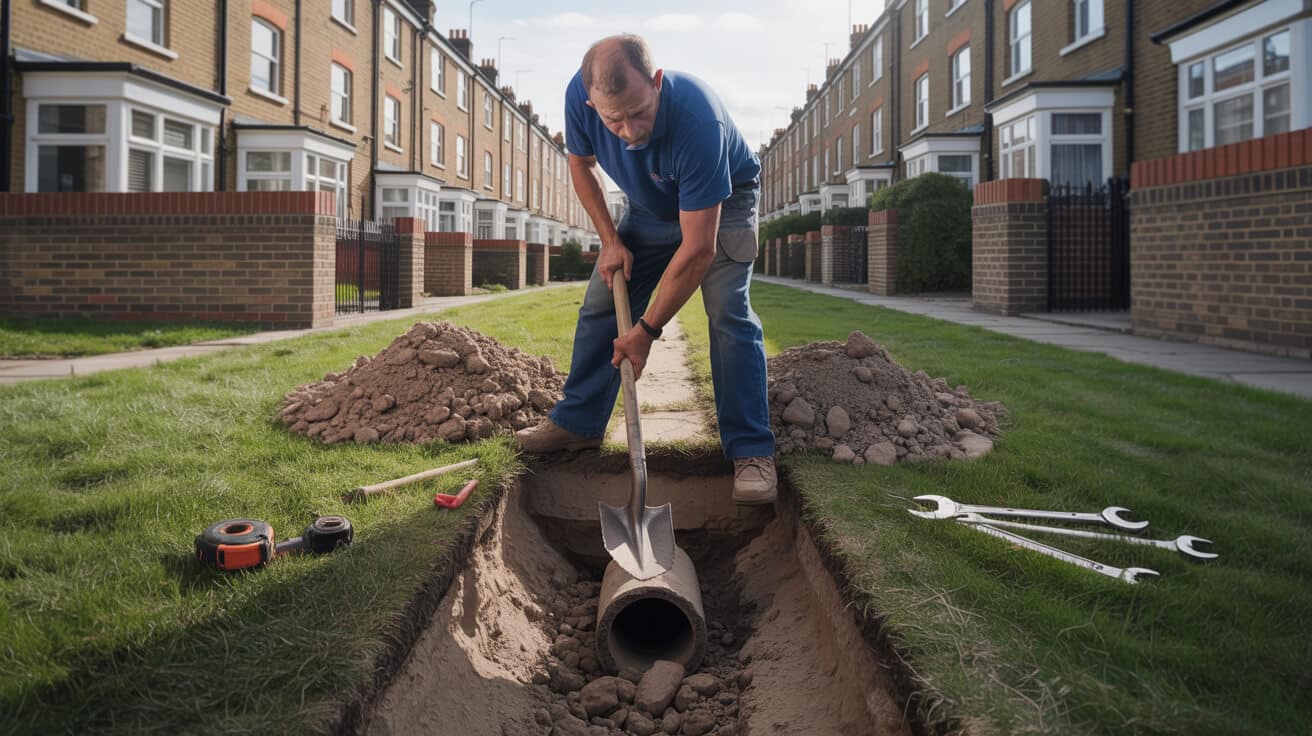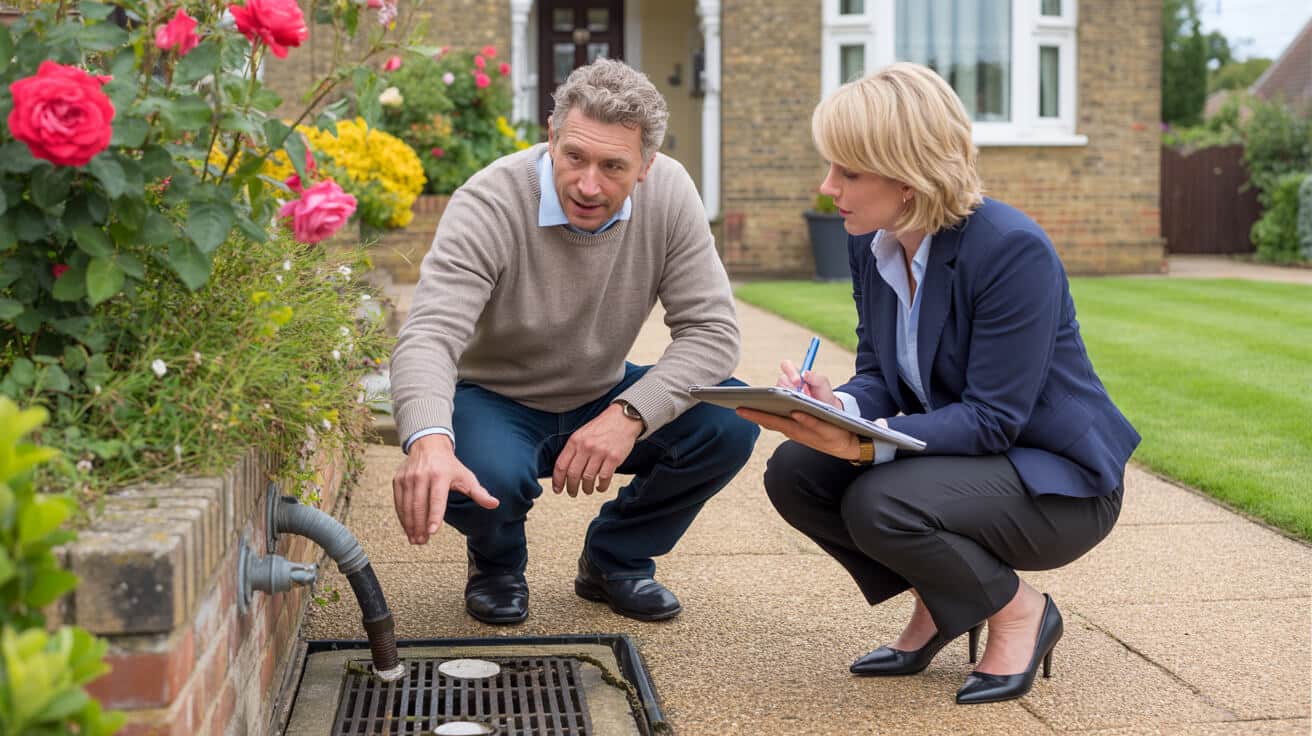 Bathroom Installation Cost Guide Uk Breakdown
Bathroom Installation Cost Guide Uk Breakdown
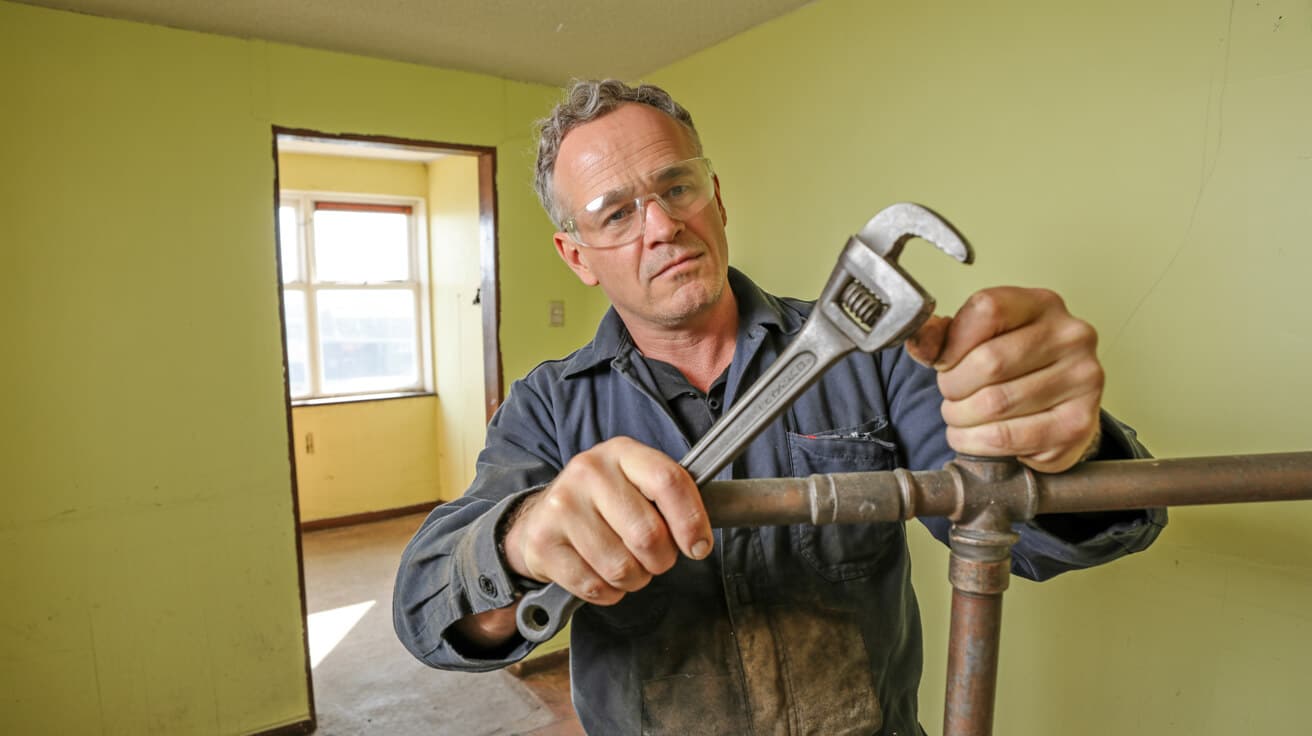
What Makes Up the Real Cost of Your Bathroom Installation—And What Most People Miss
Every property—from new-builds gleaming in a city block to the leaky charm of an Edwardian terrace—holds quiet plumbing truths beneath its surface. You might be fixated on which shower or tile to pick, but the price of your bathroom project is built around what you never see in the brochures. Whether you manage a city letting, own a country house, or answer to a building committee, understanding the components that drive cost goes far deeper than first impressions.
It’s never the money you spend spotting hidden leaks that stings—it’s the bill to fix them once they’ve soaked through.
The foundation of every bathroom budget sits in your property’s infrastructure. Are you looking at ancient lead pipes? Rotten joists hidden under old lino? Pipes run at awkward angles, subpar electrical earthing, or shoddy repairs left by past owners? These are the “unknowns tax.” Skipping a professional pre-instal bathroom survey invites disaster—costs double when surprises arise with the walls already opened up. A proper WRAS-certified survey, typically £150–£300, prevents guesswork and future rows, and ensures all extra costings are clear up front.
Next, skilled labour. UK bathroom installations demand trained hands—WRAS, G3, or Part P sign-off for water, pressure, or electrics. You’ll pay a premium for this because qualified labour now outweighs material costs, especially in and around London. It’s tempting to chase quick savings using “a mate who says he’s done plenty.” But skimp here and watch the costs mount: insurers, home-buyers, and even local authorities insist on compliance paperwork. Saving £1,000 now can kill a sale, invalidate insurance, or trigger expensive remedial works years down the line.
Every property class brings its own quirks. Victorian terraced houses hide corroded pipes and wonky floors; semi-detached 1950s homes love to spring rotten timber; even modern flats conceal pressure drops and out-of-sight waste runs. The older and more Renovated the home, the more it pays to get everything checked up front and priced with clarity.
Comparing quotes can feel like chasing shadows: two “like-for-like” quotes can hide enormous differences. One includes strengthening rotten floors; the other bills it separately at crisis rates after you start. To protect your wallet—and your time—demand a list of what’s included, standard rates for anticipated extras, and how any adjustment is handled. If it isn’t written, assume it isn’t covered.
Why Is a Detailed Bathroom Survey Worth Paying For?
A good survey is your financial firewall. It covers pipe pressure checks, main stopcock location, leak detection, regulatory sign-off paths, and realistic prep for work—saving hundreds of pounds and hours of heartache from disputes or delays.
Where Do Most Bathroom Budgets Really Go Wrong?
Labour, by far. Especially if you’re changing the space rather than swapping “like for like.” Ask for every task and credential to be priced out; a lump sum hides risk.
Does Older Mean Pricier, Always?
Not every time. An unloved “new build” can hide as much trouble as a period property. Insist on a risk assessment and never rely on the build year as sole guidance.
Hidden Surprises: What Actually Blows Up Bathroom Renovation Budgets?

The fastest way to drain your bathroom budget? Unforeseen problems revealed after you strip out the old. No estimate can perfectly predict every hidden issue—water damage, botched DIY repairs, or substandard fittings from decades prior. That’s where project costs start to spiral.
Once work begins, rotten joists, floor dips, or ancient plumbing can cause delays, add £300–£1,500 instantly, and push your schedule out by a week or more. A proper inspection with moisture metres or endoscopes gives you an early warning. Specialist surveys flag anything “unknown” in advance—vital for landlords and managing agents responsible for compliance or tenant safety.
The cost doesn’t just come from physical repairs. move a toilet, instal a digital shower, or add underfloor heating and you’ll need fresh WRAS, G3, and Part P documentation. Failing to comply voids insurance and can make resale impossible—it’s common to see homes lose sales over “missing” certificates. The “postcode lottery” of local Building Control sign-offs can add days and dozens of pounds if the paperwork is missing or slow.
There’s nothing worse than realising an old plumbing job needs redoing, just because a single missing certificate blocked a sale.
Don’t forget “scope creep”—last-minute requests such as relocating the bath, adding wall-hung sinks, or throwing in extra tiling. What starts as a small upgrade quickly snowballs unless every change is documented.
How Can You Prevent Nasty Budget Surprises or “Scope Creep?”
Require your installer to provide a detailed survey report up front, with risk pricing for likely discoveries and a process for itemising every requested change. Never accept handshake promises or “we’ll figure it out later.”
Which Certifications Must Never Be Skipped?
Three are non-negotiable: WRAS for water fittings and upgrades, G3 for any unvented cylinder, and Part P for electrics. A reputable firm delivers all paperwork, including a Benchmark logbook for your appliances, before asking for final payment.
Budget, Standard, and Luxury: What Does a Bathroom Actually Cost in the UK?
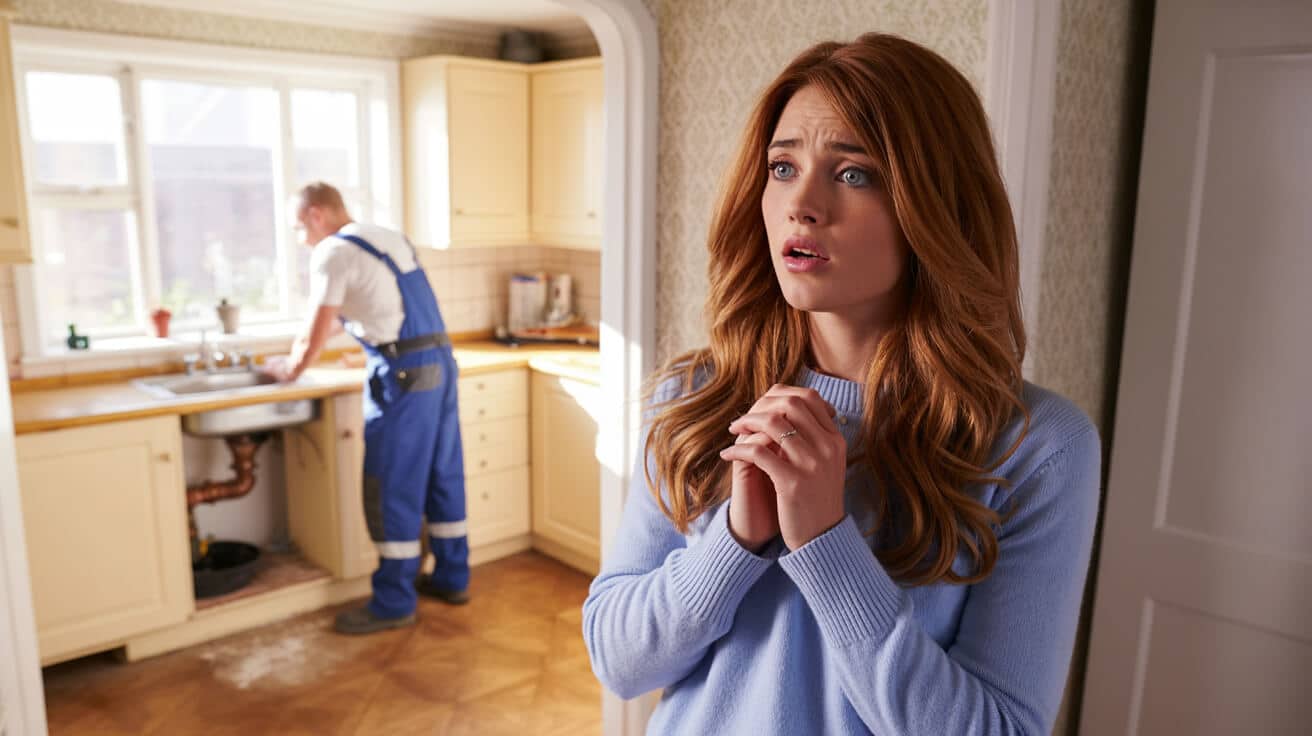
To budget with confidence, anchor your vision to what’s typical for your postcode and ambition. Here’s a snapshot of real instal costs for every class.
This table gives you a sense of what to expect:
| **Budget Fit** | **Standard Fit** | **Luxury/Premium** | |
|---|---|---|---|
| Total Cost | £2,000–£4,500 | £4,500–£9,000 | £10,000–£20,000+ |
| Scope | Basic suite swap, no changes | Mid-range suite, layout tweaks | Wetroom, digital shower, custom storage |
| Extras | Minimal, “like for like” only | Added tiling, electrics, better taps | Custom brands, UFH, smart controls |
Budget: Usually a straightforward “replace and refresh” for rental properties—old WC out, new basin in. Jobs are fast but don’t fix unseen issues or meaningfully increase value.
Standard: This is the most common class for UK owners—new suite, modern tiles, better storage, maybe a layout shift. Here, you see higher labour hours, rising compliance costs, and mild headache if old infrastructure resists change.
Luxury: Digital showers, designer fittings, glass screens, or underloor heating become the norm. You’ll pay more for time, compliance, documentation, and protected warranties. Premium-grade work audits every part of the system; shortcuts aren’t tolerated.
Bragging rights come with strict compliance—a premium bathroom isn’t just posh, it’s safe for reselling, insurable, and built to last.
Is There Any Fast Way to Save Without Pain Later?
Get a full quote breakdown for fixtures and labour, including “what if” extras before anyone tools up. No single lump sum protects you from add-ons.
Does Top-Price Always Equal Top-Quality?
Only if the pricier job comes with better trades, site prep, and full compliance. Fancy finish on weak plumbing is wasted money.
How Location Shapes Your Bathroom Spend: City vs Rural, North vs South

Where you instal matters nearly as much as what you instal. London remains the costliest, with day rates for skilled plumbers now past £400, plus extra fees for travel, parking, and waste removal. Plan 15–30% higher costs for capital cities, plus congestion charges, skipped deliveries, and parking permits.
Elsewhere in England and Wales, costs are lower but terms are harder. A job in Cornwall may save you £1,000 on labour but lose you days to material delivery. Scotland brings the lowest averages, but logistics—especially for remote properties—can offset savings with extra callouts. City centres trigger extra charges for access (think: flats with secure entry) while country homes bring longer travel bills and stricter scheduling.
Geography isn’t just about miles—it’s the difference between a same-day fix and a week’s wait for a crucial part.
How Can You Tell Whether a Local Quote Actually Stacks Up?
Ask for three written, itemised quotes with explicit breakdowns for labour, materials, and region-specific extras. Pin down charges for removing waste, parking access, and “city surcharge.”
Should You Use An Out-of-Town Installer?
Sometimes it works for high-end or complex jobs, but delays, travel, and warranty management often eat all imagined savings. Local teams with good references and compliance history bring more peace of mind.
Fighting Cost Overruns: Why Bathroom Projects Go Over Budget (And How to Stay Safe)
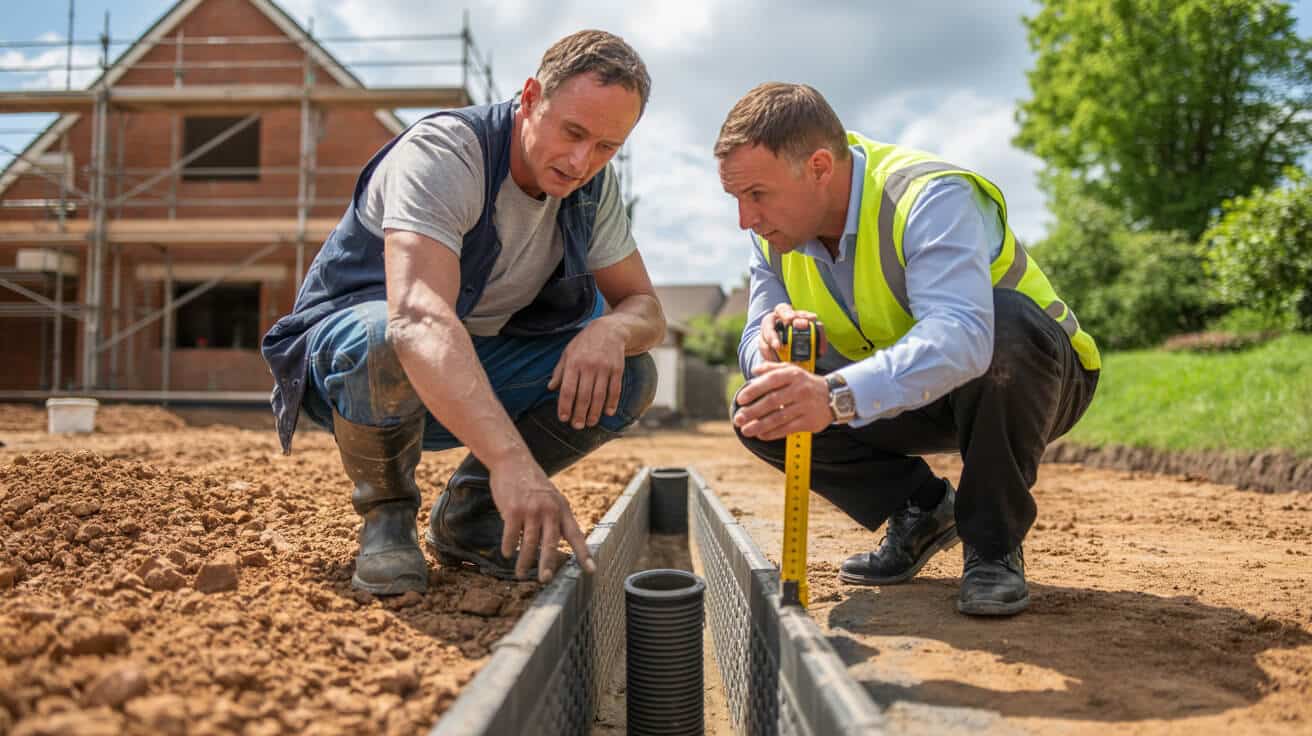
Most major bathroom projects—renovations and upgrades especially—end up at least 10–20% costlier than the original quote, particularly once real site conditions are revealed. Delays aren’t driven by unaffordable taste, but by what’s discovered after opening up: water damage, rotten timbers, hidden leaks, electrical bodges.
Your risk factors:
- Hidden structure problems: damp, rot, or sagging joists mostly invisible on day one.
- Compliance risk: missing certificates for electrics or cylinders.
- Endless upgrades: upgrades agreed by text instead of written change order.
- “Verbal agreements” only: nothing written down, so it’s your word against theirs.
How to fix it:
- Every scope item must be detailed and written—fixtures, labour, VAT, and likely extras.
- Release money only as project milestones are finished and signed off (preferably with photos and certificates).
- Keep a contingency fund—industry pros like CIPHE recommend 10–15% *(CIPHE 2024)*.
- Demand written variation orders for every extra, upgrade, or change as soon as it comes up.
Your bathroom’s best protection isn’t insurance—it’s a written estimate with milestone payments, photos, and compliance paperwork from the start.
Can You Backstop Every Risk Before You Start?
Absolutely—when all permissions, documentation needs, and change authorisations are handled in advance and in writing.
Should You Ever Trust a Verbal Only Quote?
In building works, never. Unless it’s written, with an explicit policy for variations, you’re not protected when the bill grows.
Compliance and Certification: The Only Non-Negotiable
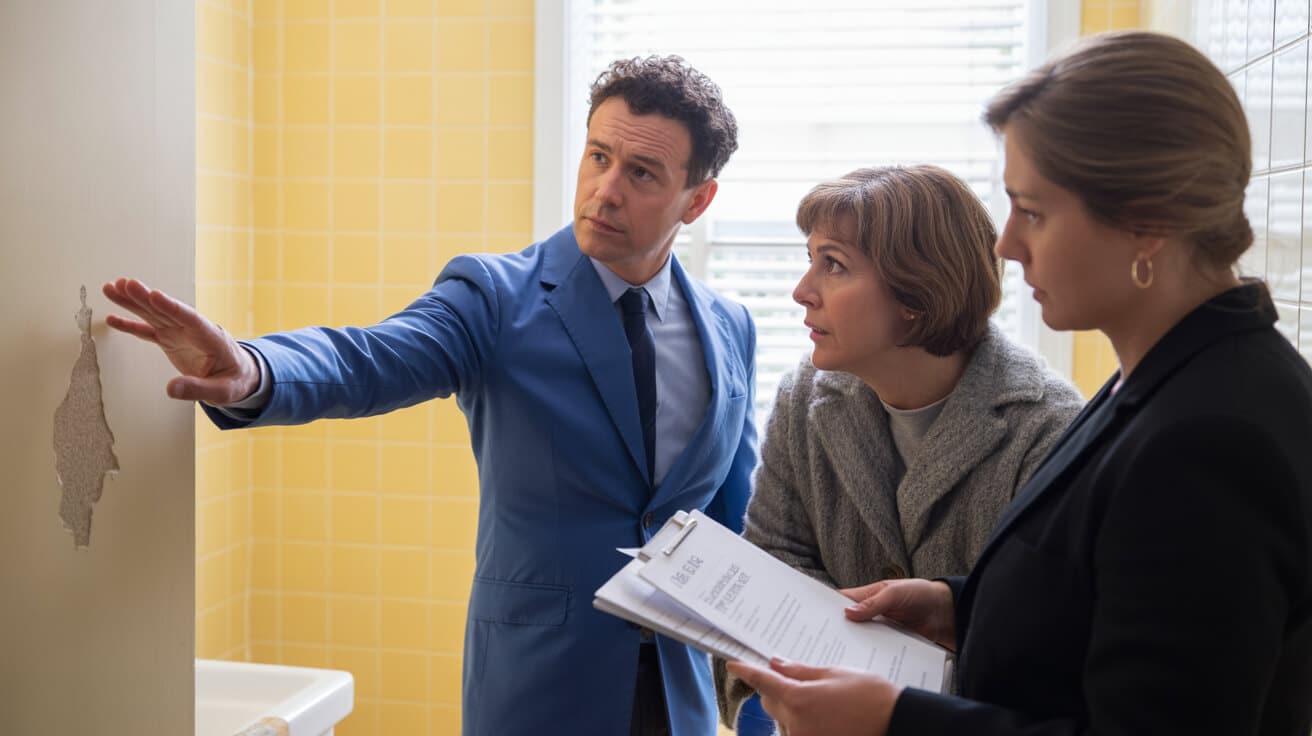
What really underpins a safe, lasting, and insurable bathroom instal? Compliance. The UK sets regulations with your protection in mind—the right plumber follows the rules and gives you paperwork every time.
Certificates you need, without exception:
- WRAS Approval: All water fittings and pipes.
- G3 Certification: Pressurised unvented hot water systems.
- Part P: Electrical work in bathrooms or cross-room connections.
- LABC Notification: For structural works, new drains, or moving the WC pipe.
The industry standard is: your installer must not only have these accreditations, but also give you every certificate before taking their final payment. That includes a full benchmark logbook for every registered appliance. Without it you can’t sell, insure, or let out your investment.
If paperwork isn’t part of the deal, walk away—nobody should pay to fix someone else’s compliance mistake.
How Can You Guarantee Every Box Is Ticked?
Check credentials before work starts and ensure the team are WRAS, G3, Part P and WaterSafe accredited. File every document (hard copy or digital) before the installer leaves.
Is There a Link Between Price and Compliance?
Not as strong as you’d think. Honest teams charge upfront and finish with paperwork in hand. Paying more for a job undone or un-certified is throwing good money after bad.
Secure, Transparent Bathroom Quotes: Your Best Defence Against Spiralling Costs

To dodge confusion, contested invoices, or unfinished rooms, transparency trumps everything. The best quotes show every element: fixtures, labour, VAT, anticipated extras. You need policies for any change before it happens—what scope is included, how surprises are priced, and who authorises spend.
Ask yourself:
- Does the quote break down every cost—by equipment, labour, VAT, with extras clearly listed?
- When the plan changes (e.g., leaks or hidden damage), how is this handled? Is approval needed before extra expense?
- Is payment required only at milestones? Are you shown demo photos or certificates at every stage?
- Does the company provide written variation orders for every adjustment, upgrade, or scope change?
Nothing said across the kitchen table counts—if it’s not in your quote, it’s not in your warranty, and it’s not in your protection.
How Do You Spot the Installer Everyone Wants?
A true pro shares glowing references, credentials, and photo records. They arrive pre-accredited (WRAS, G3, Part P, WaterSafe), maintain documentation, and own every step until final sign-off.
Can You Negotiate? Should You?
Yes—and early. Lock every agreement into the initial quote—un-priced extras or “deal with it later” terms are magnets for disaster.
Why Plumbers 4U Is Trusted by Homeowners, Landlords, and Property Managers
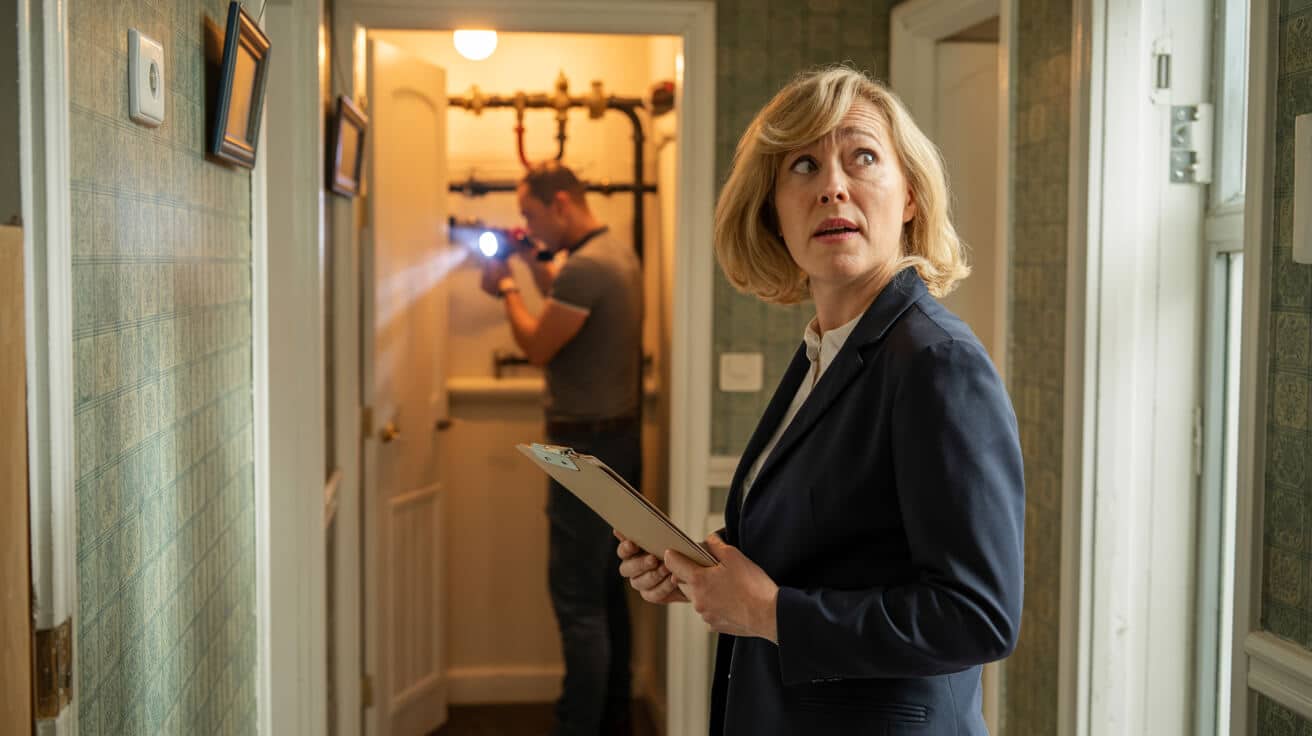
Plumbers 4U delivers security to owners, managers, and agents seeking control, compliance, and clarity. You don’t get vague promises, you get systematic assurance—at every stage, from planning to aftercare.
How you’re protected:
- Diagnostic Surveys: Our team finds trouble before it buries your budget. Expect full documentation on valves, pipework, leaks, and wiring risks.
- Fully Accredited Workmanship: WRAS, G3, Part P, WaterSafe—your job is always signed off by the right professional, each certificate included.
- Transparent Quotes: Nothing hidden—each estimate dissects the price into labour, fixtures, certification, and extras.
- Phase Payments: You pay *after* every verified milestone, with photos as proof each stage is complete.
- Compliance and Aftercare Guaranteed: Every certificate (including Benchmark logbooks) handed over on completion, with digital archiving for insurers or future buyers. Ongoing customer support for as long as your bathroom lasts.
The quality of your taps or suite is meaningless without the documentation and compliance to back them up for years to come.
How Does Plumbers 4U Prove Its Standards?
By handing you every relevant certificate—WRAS, G3, Part P, WaterSafe—plus an archive of photos, warranty docs, and a direct aftercare line.
What Makes Plumbers 4U Stand Out for Professionals?
Our process is built around you—no smoke, no panic, just clarity and full compliance. From scope definition to aftercare, everything is visible, accountable, and validated.
Ready to Start? Book Your Certified Bathroom Survey with Plumbers 4U Now
Kick off your upgrade the right way—book a bathroom survey from Plumbers 4U so surprises are dealt with before demolition, compliance is certain, and all costs are locked in.
- Full-scope and line-by-line estimating: —with no space for mystery extras or hidden bills.
- Compliance and documentation, guaranteed: —every certificate, warranty, and proof ready for your next move.
- Transparent, milestone project updates: —everything tracked from survey to aftercare, with photos and progress logs for your records.
Choose the future-proof path: compliance certainty, peace of mind, and proven quality—choose Plumbers 4U.
Are you ready for a bathroom that won’t just look right, but be insurable, worry-proof, and sale-ready for a decade? Book your certified survey today—and make your next project one that pays dividends in safety, value, and real comfort.
🚰
Frequently Asked Questions
Why do hidden bathroom costs and compliance traps keep surprising even experienced UK property owners?
bathroom renovations in the UK catch out even seasoned landlords and portfolio managers because critical risks are hidden behind plaster, under floors, or inside regulatory documentation. Most owners budget for visible upgrades, yet the most costly hits—like concealed water damage, forbidden plumbing arrangements, or missed paperwork—only surface after works start, and by then they’re non-negotiable. Deteriorated joists, unprotected pipework, or legacy electricals push jobs from “refresh” to structural repair, while modern rules (like WRAS product codes or Part P requirements) mean that even quality work, if unverified, can stall sales or insurances for months. This is why letting agents, councils, and institutional owners increasingly require every line of compliance to be itemised and cross-referenced at quote stage.
Everything you don’t test or specify at the survey inevitably becomes tomorrow’s emergency.
How can hidden risks be made visible—before the quote or plan is finalised?
- Full-system diagnostic survey: Employ WRAS and G3-certified engineers to check for rot, leaks, and legacy hazards before the first fixture is touched.
- Demand a compliance preview: Ask your contractor to map every regulation—Part G, H, WRAS, LABC—against your actual job scope, in writing.
- Insist on transparent variances: Make sure “provisional sum” or “TBC” items are replaced by site photos, written justifications, and specific cost bands.
- Link survey to insurance: Verify that all planned work is insurable (and evidence submitted) before down-payments are made.
Which specific rules shape cost and headaches after the fit?
- G3 (Unvented hot water): No G3, no selling or letting—period. Insist on engineer’s G3 badge in documentation and final sign-off.
- WRAS and Water Regs 1999: Fittings, valves, and even certain hoses must be pre-approved for all rented or public buildings.
- LABC filing: Structure changes, soil stacks, and even some tiling jobs need notification and compliance tracking, especially in flats.
- Part P and landlord checks: Property agents get fined if signed certificates aren’t on file; don’t trust “we’ll sort paperwork at the end.”
If in doubt, book an independent compliance audit pre-start—Plumbers 4U provides job-by-job documentation so every asset, whether personal or portfolio, stays insurable and market-ready.
Where do typical bathroom installation costs get blown off-course—and how can quote breakdowns expose hidden spend?
While a headline “bathroom instal” price in the UK is usually all-in, the devil is firmly in the detail. More than half of final bills stem from labour, but it’s compliance, contingency, and disposal where costs spiral. Cheap suits often hide over £1,000 in unaccounted “extras” that only appear after work’s begun—old plasterboard with asbestos, pipes that fail pressure or temperature tests, or floor joists that crumble on exposure. Even a standard fit-out ripples in cost if you haven’t locked down every product model, brand, and required certificate in advance.
| Cost Layer | Typical Band | Common Omission |
|---|---|---|
| Labour | 40–60% of total | Out-of-hours callouts, retest fees |
| Materials | 30–45% of total | Spec upgrades, tile overages |
| Compliance/Admin | 8–15% of total | LABC fees, G3/Part P revisit |
For high volume landlords or commercial properties, a £2,500 “budget bath” can double after floorboard repairs or when Part L energy upgrades are enforced post-site survey. Unpriced admin—skip permits, hazardous waste, or surprise electrics—often costs more time (and therefore more money) than any “luxury” product swap-out.
Every missing model code or unfiled certificate is an open cheque for admin penalties and surprise costs.
What signals a fully defensible, risk-proofed quote?
- Feeds every work stage into a milestone grid (from demo to commissioning, using WRAS and G3 codes)
- Every fixture, tile, and valve model is pre-listed with associated compliance numbers
- All admin (certifications, disposal, parking, “site protection”) separated and priced
- Payment tied to signoff of each phase—never on “completion in principle”
With Plumbers 4U, your quote contains clickable photo logs, regulatory cross-references, and a payment rulebook that matches the size and scope of your asset. Nothing discretionary, and never another hidden line item on jobsheets or invoices.
How do property location, age, and access logistics determine your true renovation spend?
Installation costs in the bathroom market are not one-size-fits-all. A council flat refurbishment in North London and a rural detached house in Devon will see dramatically different input costs—even if the product catalogue is identical. Labour in major cities runs 25–40% higher than elsewhere, while aged properties trigger mandatory tests for water quality, old electrics, lead, or rot, each stacking up cost and time. Flats and listed properties pile on admin: fire compartment checks, communal permissions, extra insulation, and timed access for works—all critical for compliance and avoiding repeat visits.
| Scenario | Typical Range | Key Impact Factors |
|---|---|---|
| London/SE Flat | £7,000–£20,000 | Parking, Bin Store, LABC event notice |
| Heritage/Listed | £8,000–£15,000 | Consent, risk logs, specialist fixes |
| Rural | £4,500–£9,000 | Access, travel, skip return, materials |
| High-rise | £6,500–£13,000 | Lift slots, noise, communal property |
Postcode, heritage status, leasehold rules—these do more to shape cost and timeline than any tap or tile.
How do you bulletproof a project against local surprises?
- Get a “property passport”—have the contractor walk every route, list all communal, site, and heritage permissions needed, and issue a logistics risk grid
- Confirm local admin: parking, access rooms, skip drop, special waste, fire regs
- Ask for references from same-type and -age buildings, never just “other jobs nearby”
By using Plumbers 4U’s location-tuned project teams, you sidestep the learning curve and reduce delays, fines, or forced stop-works that cripple budgets for council, landlord, and commercial assets alike.
Why do exclusions, variations, and upcharges so often break even well-planned bathroom budgets?
UK bathroom quotes usually show what’s in—but rarely highlight what isn’t. “Inclusive” often only covers the basics: strip-out, standard first and second fix plumbing, basic electricals, limited tiling, and removal of old fitments. It’s the exclusions that create invoice inflation: floor reinforcement, wall tracking, isolation valve upgrades, reworking party walls, or regulatory extras such as LABC and G3 running into the thousands. Mid-job “wishlist” product swaps—digital shower for thermostatic, wall-hung for close-coupled WC—nearly always have admin, certification, and fitting upcharges not evident at quote stage.
| Standard Inclusions | Typical Extras | Confirm in Writing |
|---|---|---|
| Survey, fit-out, basic waste | Underfloor heating, fire barrier, partition move | Compliance paperwork, milestone grid, upgrade pathway |
| Entry-level electrics, base tiling | Premium brassware, digital controls, wall moves | Payment stages, aftercare handoff |
Clarity on exclusions up front converts guessed budgets into controlled costs and faster project approvals.
How do you structure the contract to prevent upcharge or exclusion disputes?
- Use a side-by-side inclusion–exclusion table with sign-off on both sides at contract
- Ensure payment can be withheld if upgrades or extras aren’t formally written and signed before the variant is supplied or installed
- Insist on a milestone-linked payment structure, never “pay-on-completion”
Every Plumbers 4U contract grid shows items included, items extra, and what must be confirmed—delivering certainty for tenants, owners, and managing agents before a single pipe is cut or a tile is laid.
How does changing layout or selecting bespoke products dramatically alter both costs and compliance requirements?
Heavy layout changes and design aspirations have changed: every new soil stack, wall shift, or repositioned bath now triggers either LABC, WRAS, or energy compliance paperwork—even if your budget was intended for “simple” swaps. Each moved drain, UFH circuit, or wall move has a pricing and compliance uplift, often triggering demands for higher-spec materials (tank boards, fire-stopping, low carbon) or multi-trade signoff including structural. “Aspirational” upgrades, like spa-grade brassware or digital-controlled wetrooms, need time for supply, require more admin, and push up payment stage numbers—most critical for letting agents and facilities managers under time pressure.
| Change Motive | Cost Uplift | Compliance Needed |
|---|---|---|
| No-move, like-for-like | Baseline | Minimal, core signoffs only |
| Soil or structure move | +£1,500–£5,000 | LABC, WRAS, multi-trade |
| Wetroom/high-spec | +£7,000–£14,000 | WRAS, G3, tanking, aftercare certs |
“A clear line between essentials and design upgrades stops both budget regret and compliance risk from snowballing.”
What is the most effective way to control wishlist upgrades and variations?
- Set “essentials” and “optionals” in contract language attachment
- Lock all product code swaps or variant upgrades to documented, signed milestone triggers; never accept “verbal authorisation”
- Use a staged variation protocol so each extra comes with a new price, compliance doc check, and timeline revision
Plumbers 4U’s process mandates written signoff before any upgrade—locking in both price transparency and regulatory surety, whether you’re fitting for resale, letting, or family comfort.
What contract, admin, and documentation steps guarantee a risk-proof, asset-enhancing UK bathroom installation?
The asset value of a bathroom instal isn’t in the finish, but in the paperwork and process behind it. To avoid project purgatory, you need checks at every stage: from detailed essentials lists, to comparative WRAS/Part P/G3-certified quotes, through milestone-linked payments, and—most critically—delivery of all certs and handover packs before final pay. For public, commercial, landlord or council stock, this pack is now a legal requirement for letting, insurance and resale.
Contract protocol: stepwise checklist
- List essentials vs. wishlist before contract—attach to job record
- Get at least three itemised, compliance-certified quotes; no “summed” quotes or TBCs
- Release payment only on delivery of milestone paperwork (strip out, first fix, signoff, certs filed)
- Confirm that all admin—warranties, certs, aftercare—is included before scheduling final payment
Copy-and-Use Client Documentation Grid
- [ ] WRAS/G3/WaterSafe survey logged, with supporting photos
- [ ] Each inclusion, exclusion, upgrade, and extra line-itemed and client-initialled
- [ ] All certs and handover paperwork filed, digital and hard copy
- [ ] Admin milestones tracked and matched to payment releases
- [ ] Variation/upgrade protocols pre-agreed and contractually binding
A contract secured with documentation is an appreciating asset, not just a fitted room.
Plumbers 4U’s bathroom planning pack includes full checklists, sample contracts, and milestone grids—allowing landlords, public sector clients, and homeowners to future-proof every project and expose no asset to paperwork gaps.
What happens if regulations are skipped, certificates are missing, or corners are cut on a bathroom refit?
Ignoring compliance, sidestepping certificates, or leaving gaps in the admin trail is the fastest way to downgrade your asset, expose you to fines, or tank insurability in UK bathroom projects. LABC can force strip-out and rebuild; insurers deny fire or water claims without paperwork; buyers and tenants increasingly walk from properties missing Part P or G3. Large landlords, councils, and commercial asset managers already demand digital record-keeping for every installation or upgrade, so every extra label—G3, WRAS, warranty—is non-optional. Missing them isn’t a “maybe fix later”—it’s an asset and income risk with compounding impact.
| Omission | Direct Asset Impact | Extended Risk |
|---|---|---|
| LABC paperwork absent | Legal halt, forced rectification | Insurance blocked, asset unsaleable |
| Missing WRAS/G3 / Part P | Letting or sale blocked | Mortgage refusal, tenant risk |
| “Paperless” contractor | Fines, legal breach | Uninsurable, lasting brand impact |
Every skipped form or missing cert can cost property managers years of asset growth—sometimes in a single compliance audit.
Next actions for airtight compliance
- Retain every certificate, handover, and stage sign-off in print and in digital format
- Never release payments on “near-completion”—insist on compliance forms in hand first
- Choose contractors with a digital paperwork chain—Plumbers 4U manages every record, so you never face a compliance audit scramble
Plumbers 4U. Where every step is certified, every document is filed, and every property is insured and let-ready—for today, tomorrow, and every audit in between.

